|
Neotropical electric fishes |
||||||||||||||||||||||||||||||
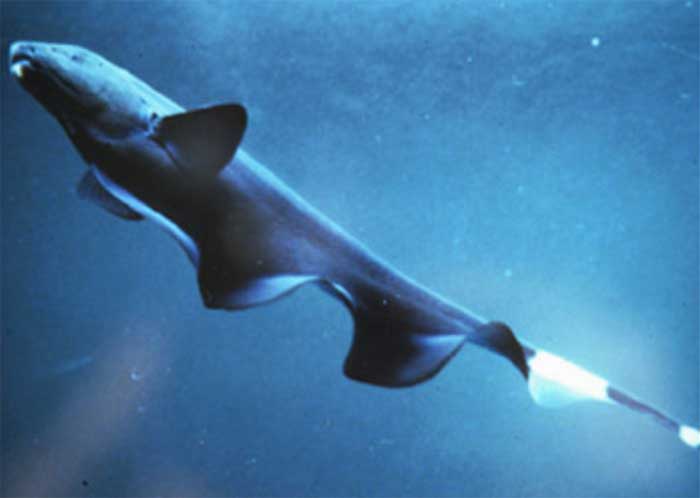 |
||||||||||||||||||||||||||||||
The Black Ghost Apteronotus albifrons in motion
|
||||||||||||||||||||||||||||||
| A main area of research in the Albert Lab is on the Neotropical electric fishes, also known as American knifefishes or Gymnotiformes. Electric fishes are an ecologically important part of the nocturnal ichthyofauna in Neotropical freshwaters. In certain habitats, such as the deep channels of large rivers and the rootmats of floating meadows, electric fishes constitute the majority of the fish biomass. Gymnotiform species range from the Pampas of Argentina (36° S) to Chiapas, Mexico (18° N), and inhabit continental waters of all South and Middle American countries except Chile and Belize. | ||||||||||||||||||||||||||||||
| Research on gymnotiforms includes all aspects of their phenotypic diversity, including physiology, morphology and behavior. Of particular interest is the origin and evolution of their highly specialized electric sense and also of their electric organ discharge. Gymnotiform fishes continually emit weak electric discharges, which they use in object location and communication. This electroreception is accomplished by detecting changes in the shape, amplitude, or frequency of the electric field. | ||||||||||||||||||||||||||||||
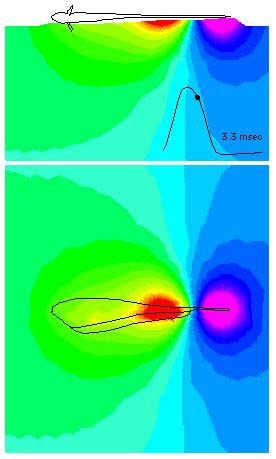 |
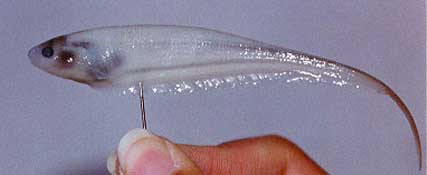 |
|||||||||||||||||||||||||||||
|
Specimen of Eigenmannia virescens
|
||||||||||||||||||||||||||||||
| Electric Organ Discharge (EOD) of Eigenmannia virescens (Sternopygidae) as seen from dorsal (top) and lateral (bottom) views. Colors indicate regions of equal voltage, from red (max positive) to purple (max negative) votls, and with a plane of zero volts transecting the posterior third of the body. Note the EOD is a four dimensional envelope (a dumb-bell shaped volume changing through time) extending to about one body-length from the body surface. The inset shows the trace of a single 3.3 msec waveform cycle with the black spot marking the moment of the EOD in the larger image. Image created by Dr. Brian Rasnow. | ||||||||||||||||||||||||||||||
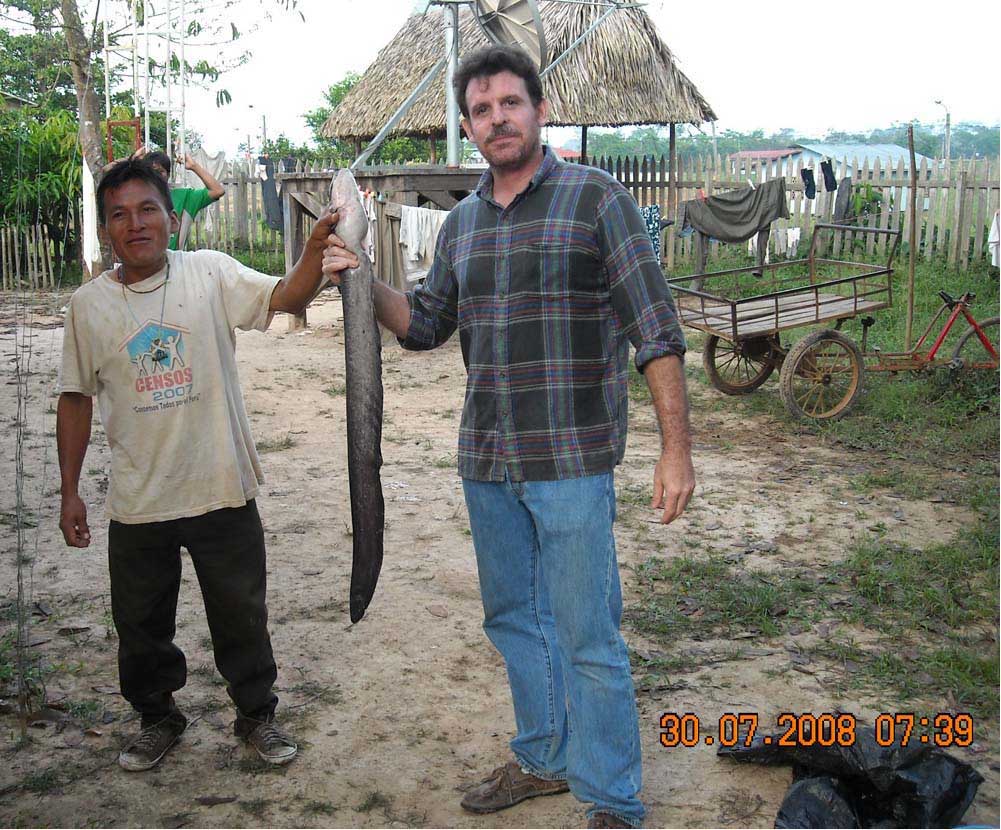 |
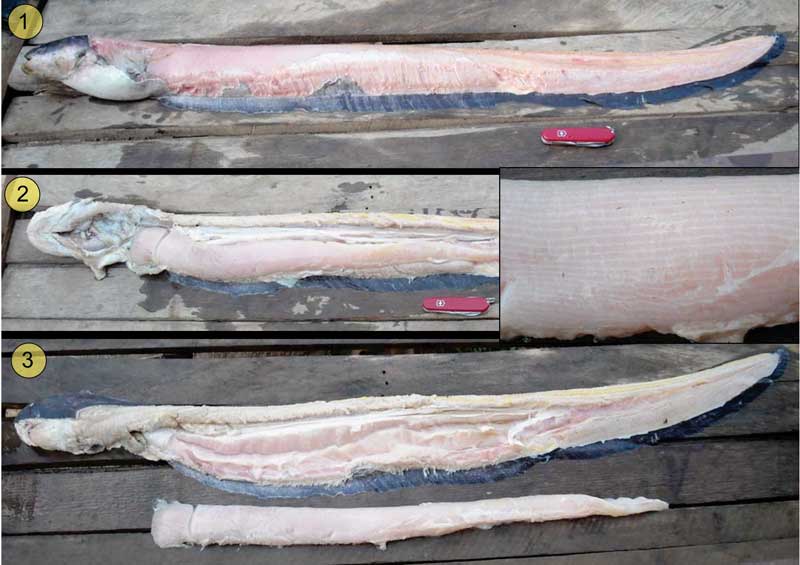 |
|||||||||||||||||||||||||||||
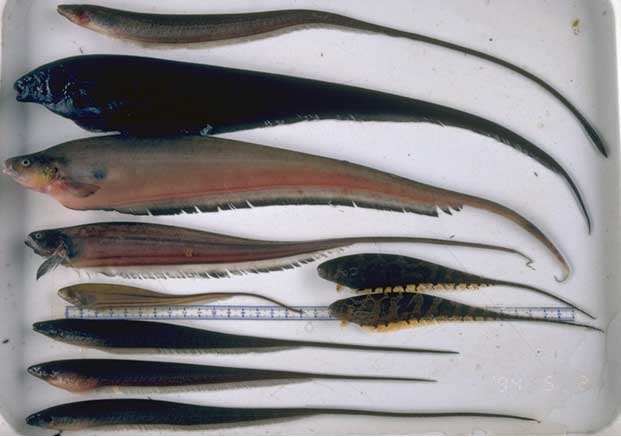 |
||||||||||||||||||||||||||||||
| Gymnotiform fishes representing 8 species from near S.F. Atabapo, in the Upper Orinoco of Venezuela. Photo: J. Abert. | ||||||||||||||||||||||||||||||
| Home | Research | Teaching | People | Publications | In the Lab | |||||||||||||||||||||||||